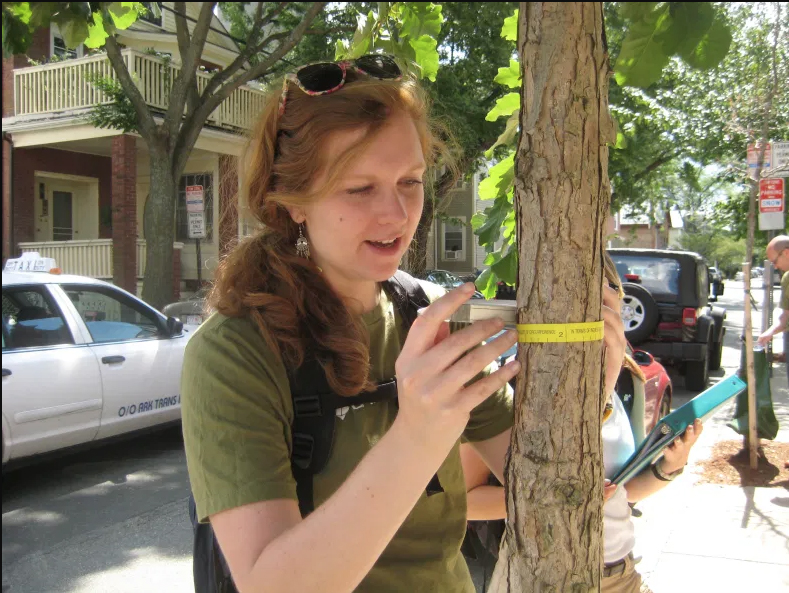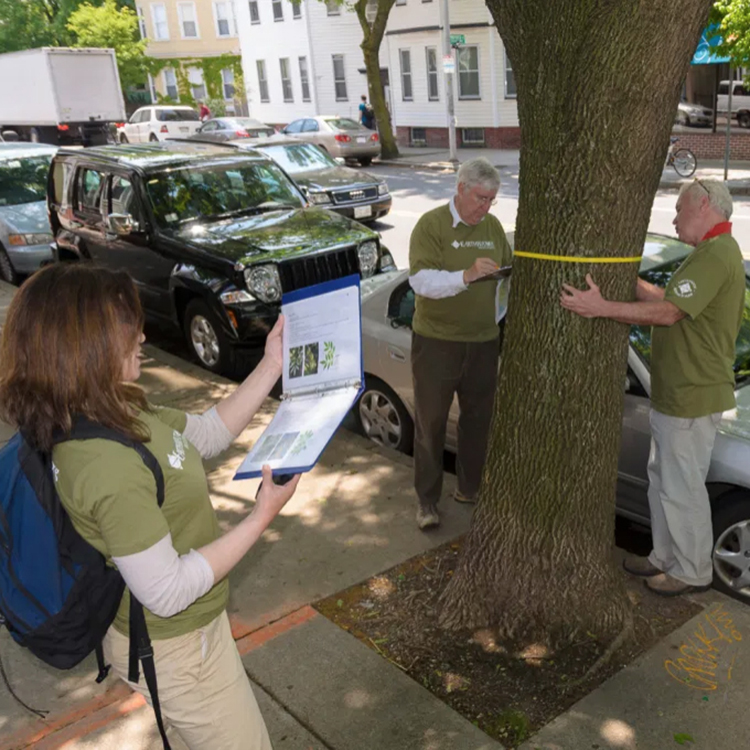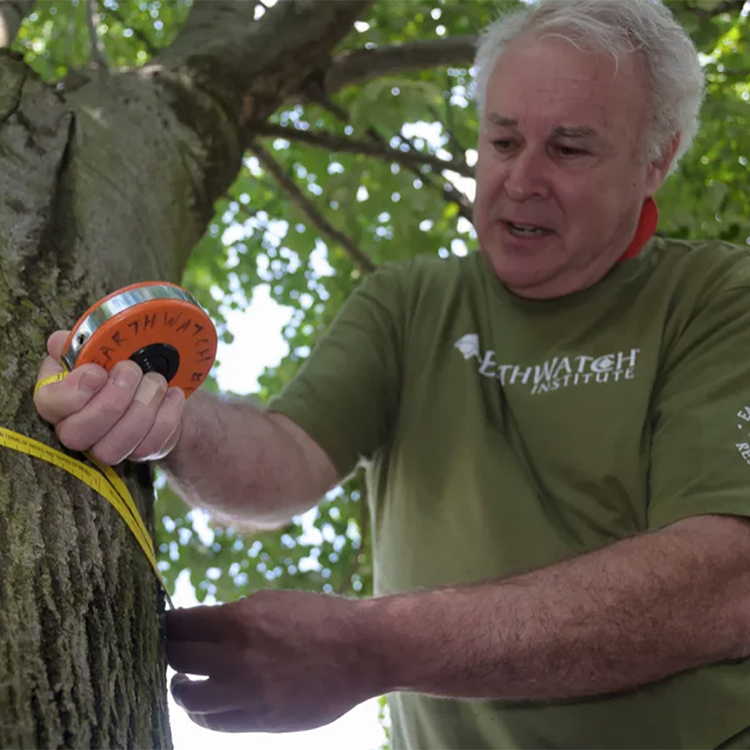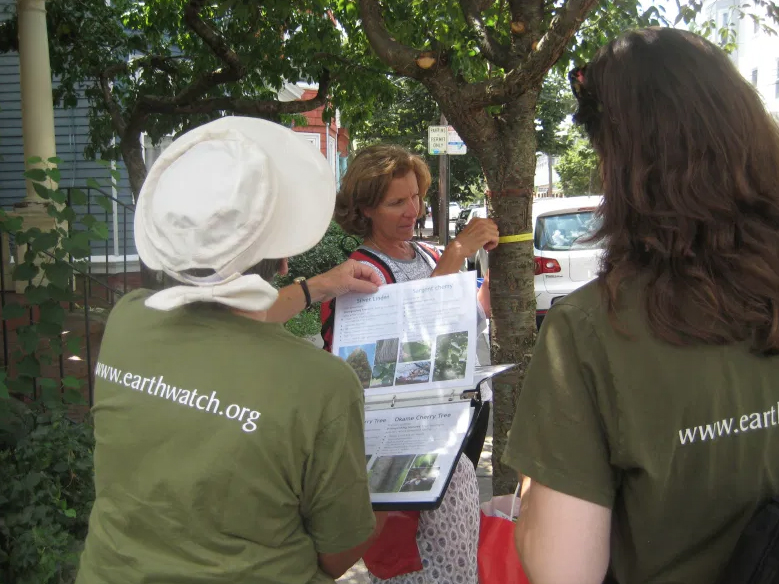.
Citizen Science, Trees, and the Quest for Urban Resiliency
.

.
By Kathryn Dunn, Earthwatch Multimedia Intern
Between 2012 and 2015, nearly 9,000 trees in Cambridge, Massachusetts were measured and monitored by both researchers and citizen scientists. Arborist for the City of Cambridge, David Lefcourt, and research director, Vanessa Boukili, Ph.D., led this effort with the extensive help of Earthwatch volunteers. The findings produced by this research are crucial to understanding the relationship between urban forests and urban resiliency.
.
Urban Resiliency / Urban Forests
Urban forests are the trees that live in an urban setting, such as those you would see planted along a busy sidewalk or in a city park. The resiliency of an urban environment is a city’s ability to adapt to stress-inducing factors, such as climate change, while continuing to survive and thrive. Resiliency is contingent on a variety of factors, but the proper maintenance and understanding of urban forests is more influential than you may think.
.

An Earthwatch volunteer measures a tree in Cambridge, MA.
.
When properly maintained, urban trees provide numerous and somewhat unexpected benefits to cities. Beside their aesthetic value, urban trees can cleanse the air, conserve water from runoff, provide shade and cooling, take the edge off city life, and much more. Several studies demonstrate that healthy urban landscapes are positively correlated with lower prevalence of health conditions such as diabetes, stroke, and heart disease.
.
A better understanding of how to strategically plant and maintain these shady refuges to get the most out of them is critical to urban resiliency.
.
Threats to Urban Resilency
Despite the clear benefits of urban forests, the trees that produce these desired affects face numerous threats. Climate change tops Lefcourt’s worry list, he says, noting that Cambridge’s trees leafed out much more slowly this year because of last year’s drought and irregular spring weather. These trees also deal with pressure from pollution, disease, lack of adequate exposure to sunlight, and lack of sufficient water.
Additionally, researchers who study these trees face obstacles in their quest to enhance urban resiliency. As expressed by Boukili, “One of the primary challenges we face is collecting data from large numbers of trees. Because there are a lot of different factors that influence tree survival and growth, we need data from many thousands of trees to figure out which factors are most important.”
.



.
The Science
Between 2012 and 2015, Boukili, Lefcourt, and other Earthwatch staff trained nearly 550 volunteers to act as “citizen scientists” capable of collecting data and monitoring about 25 percent of the urban trees in Cambridge. The data collected was used in a study to test three new models of tree growth and to supply information with which to estimate ecosystem services on an individual tree and city-wide scale.
.
The Cambridge study produced data that indicated higher survival rates, lower growth rates, and lower levels of carbon intake than were predicted by other models.
.
The findings will impact what city planners need to take into consideration when planting trees, and also have the potential to improve the function of current models used to evaluate urban forests.
.
Earthwatch Programs
Earthwatch continues to contribute to the fight to enhance the resiliency of cities through our one-day projects in the Earthwatch Urban Resiliency Program. Here, volunteers identify and measure trees—producing an amount of data that would be nearly impossible for researchers to collect on their own. The information collected also provides the necessary means to answer the larger questions about our urban spaces. The effective utilization and understanding of green space in the growing urban environment is reliant upon this type of data collection.
.

.
As our communities are faced with change, we recognize the significance of resiliency and we will continue to work to extend this type of research to other cities.
.
.
We know we’ve got work to do to ensure that our urban ecosystems are resilient in the face of climate change. There’s no better way to do that than to involve citizens directly in the research itself so they become true ambassadors of our shared environment.
— Scott Kania, Earthwatch CEO
.
Sign up for the Earthwatch Newsletter
Be the first to know about new expeditions, stories from the field, and exciting Earthwatch news.